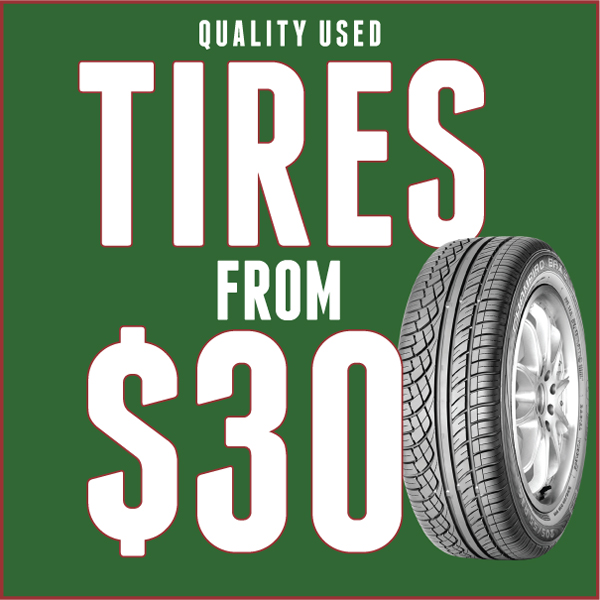The Science Behind Tire Fixing and Security
When it involves the intricate world of tire upkeep and safety and security, there exists a world of science that often continues to be hidden by the average motorist - morris tire. The materials that compose a tire, the effect of tire stress on total safety, the ramifications of tread wear, the complex dynamics of tire traction, and the often-overlooked relevance of correct wheel alignment all play essential roles in ensuring an automobile runs safely and efficiently. As we navigate through the complexities of tire repair work and safety, it comes to be noticeable that a deeper understanding of these clinical principles is not just valuable however crucial for each chauffeur when traveling
Tire Make-up and Capability
What materials make up the structure of tires, and exactly how do these components add to their capability on the roadway? Steel cords are incorporated to boost the tire's strength and help it keep its shape under various road problems.
The composition of tires plays a critical function in their performance on the road - morris tire service. The rubber compounds supply hold and grip, permitting the tire to abide by the road surface and provide security during velocity, braking, and cornering. The material and steel layers add to the tire's capability to withstand pressure, maintain its form, and support the vehicle's weight. Overall, the mindful selection and combination of these materials make certain that tires can execute properly and securely on various road surface areas and problems.
Impact of Tire Pressure on Security
Maintaining correct tire stress is important for ensuring ideal safety and security and performance while driving. The effect of tire stress on security can not be overemphasized. Underinflated tires are susceptible to getting too hot, which can lead to tire blowouts, specifically at high rates. Furthermore, reduced tire stress impacts the handling and responsiveness of the lorry, raising the danger of accidents, particularly throughout emergency situation maneuvers. On the other hand, overinflated tires have less contact with the roadway surface area, reducing grip and triggering irregular endure the tire treads. This jeopardizes the car's security and braking effectiveness, posturing a considerable security risk. Effectively inflated tires also play a crucial function in gas effectiveness, as underinflated tires can enhance rolling resistance, leading to lowered gas mileage. Regularly examining and preserving the proper tire pressure not just guarantees safety yet likewise prolongs the life expectancy of the tires, reducing substitute prices in the future.
Footstep Wear and Its Implications
Correct surveillance of tire tread wear is essential for guaranteeing optimum efficiency and safety and security when driving. As tires wear down, the deepness of the walk diminishes, lowering the tire's capacity to preserve grip, especially in unsafe or damp problems. The walk pattern and deepness play an important function in carrying water far from the tire to stop hydroplaning and keeping hold when driving surface area.
Indicators of too much walk wear include bald spots, irregular wear, and the appearance of wear indicators. Hairless areas show local wear, which can cause instability and enhanced risk of blowouts. Irregular wear may recommend issues with tire suspension, placement, or inflation parts. Wear indications are developed into the tire walk and come to be noticeable when the walk deepness gets to a particular nadir, showing the need for immediate substitute.

Recognizing Tire Grip Characteristics
Checking tire tread wear not only guarantees optimal efficiency and safety however also straight affects the grip characteristics of the tires on different road surfaces. Tire grip is a vital facet of car handling and safety, as it establishes the grip in between the tires and the roadway. Grip dynamics differ depending upon road this page conditions such as completely dry sidewalk, damp roads, snow, or ice.

Recognizing tire traction dynamics is necessary for chauffeurs to adjust their driving behavior according to the road conditions. tire shop near me. Consistently checking tire walk depth and condition can substantially improve traction efficiency, making certain more secure driving experiences throughout different surfaces
Importance of Correct Wheel Positioning
Ensuring correct wheel placement plays a vital duty in optimizing vehicle efficiency and extending tire durability. Correct wheel alignment involves readjusting the angles of the wheels to producer specs, guaranteeing that they discover this info here are vertical to the ground and alongside each other. When alignment is off, it can cause unequal tire wear, decreased fuel efficiency, and endangered handling.
One of the essential advantages of keeping correct wheel positioning is improved dealing with and security. Misaligned wheels can trigger the vehicle to pull away, affecting steering control and general driving experience. Additionally, proper positioning promotes also tire wear, preventing premature tire substitute and reducing maintenance costs in the future.

Final Thought
Finally, the science behind tire repair and safety and security is crucial for maintaining vehicle performance and ensuring motorist safety and security. By understanding tire composition, pressure, step wear, grip characteristics, and wheel placement, chauffeurs can stop crashes and lengthen the life expectancy of their tires. Proper upkeep and regular examinations are necessary for optimum tire efficiency and total automobile safety. By following these useful link guidelines, drivers can drive confidently understanding that their tires remain in great problem.
The products that make up a tire, the impact of tire pressure on general security, the effects of tread wear, the elaborate dynamics of tire traction, and the often-overlooked relevance of correct wheel alignment all play crucial duties in making certain a car runs securely and efficiently. On the other hand, overinflated tires have much less call with the road surface area, decreasing traction and causing irregular wear on the tire footsteps. Regularly examining and keeping the appropriate tire stress not just makes certain security yet likewise prolongs the life expectancy of the tires, conserving on replacement prices in the long run.
Monitoring tire step wear not just makes certain optimum performance and safety and security however additionally directly affects the traction characteristics of the tires on different road surface areas. Tire traction is a vital aspect of lorry handling and safety, as it identifies the hold between the tires and the road.